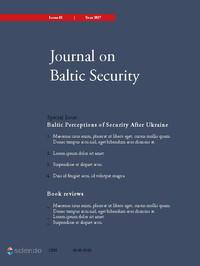Volume 1, Issue 2 (2015), December 2015

Order by:
Pub. online: 31 Dec 2015
Type: Editorial
 Open Access
Open Access
Pub. online: 31 Dec 2015
Type: Research Article
 Open Access
Open Access
Abstract
Pub. online: 31 Dec 2015
Type: Research Article
 Open Access
Open Access
Abstract
Pub. online: 31 Dec 2015
Type: Research Article
 Open Access
Open Access
Abstract
Pub. online: 31 Dec 2015
Type: Research Article
 Open Access
Open Access
Abstract
Pub. online: 31 Dec 2015
Type: Research Article
 Open Access
Open Access
Abstract
Pub. online: 31 Dec 2015
Type: Research Article
 Open Access
Open Access
Abstract
Pub. online: 31 Dec 2015
Type: Book Review
 Open Access
Open Access
Pub. online: 31 Dec 2015
Type: Book Review
 Open Access
Open Access